Published in the Ocean Watch column, Honolulu Star-Advertiser © Susan Scott
December 14, 2007
MIDWAY ATOLL » When I returned from my sailing trip in November, all I wanted to do was to stay home, work on my book and make wall hangings from beach junk.
I enjoyed being on my home island in my quiet house, and I loved being with family and friends. It would take dynamite, I felt, to move me.
Kaboom.
The blast came in the form of a proposal. I could go to Midway Atoll as a U.S. Fish and Wildlife volunteer for the annual Audubon Christmas Bird Count. The rub was that due to funding cuts, counters had to pay their own airfare this year.
I’m in, I said.
My instant change of mind can be explained in one word: albatrosses. Midway Atoll hosts the largest breeding colony of albatrosses in the world, about 800,000 mature adults. Add thousands of young unpaired albies that roam the island singing and dancing in their search for mates, and you’re walking among a million of the world’s most magnificent birds.
Another million seabirds also breed on Midway, 16 species in all, as well as Laysan ducks and Hawaiian monk seals. Shorebirds visit there, too.
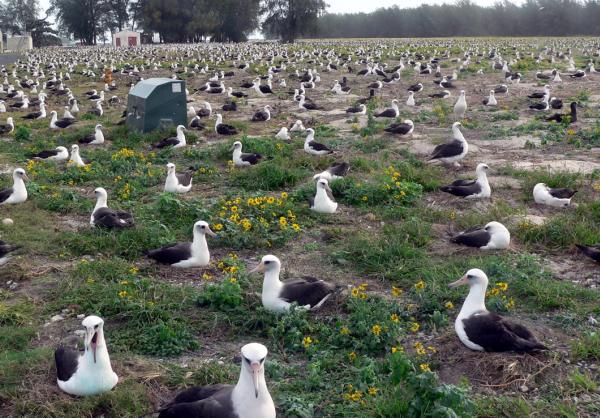
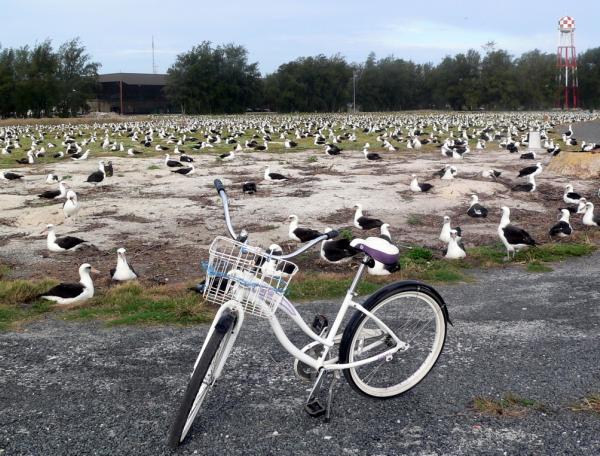
If 2 million birds nesting, resting, walking, flying, singing and dancing on two square miles of land sounds like pandemonium, it is. The Hawaiian name for Midway, Pihemanu, means “loud din of birds,” but for wildlife lovers, this hullabaloo is heaven.
Part of the fun of visiting albatross colonies is that the birds evolved without land predators and aren’t afraid of us. As they sit or stand there looking you up and down, you can imagine them thinking, “What on earth?”
Some are more curious than others. I once had a Laysan albatross untie my shoelaces as I stood talking. Another took advantage of my photographer crouch to stick its beak into my gaping pocket and pull out tissues. Another time, as I sat still, a young bird gently straightened the hairs on my arm.
Besides having personality, albatrosses are beautiful, with velvet-soft feathers that smell like the open ocean. To be able to watch these marvelous birds sing their hearts out, dance on tiptoes, cuddle, kiss, and talk to their eggs, among a hundred other behaviors, is to be one of the luckiest people on Earth.
You can be one of those people. The U.S. Fish and Wildlife Service is opening Midway to more visitors, 40 at a time for 2008. It’s a cozy number but makes the trip expensive.
Airfare from Honolulu is $2,000 round trip, and then there’s room and board when you get there. These prices reflect actual costs. The charter planes are small, and food and hotel supplies must be transported from Honolulu, 1,250 miles away. As visitor numbers increase, airfare will hopefully come down.
If wildlife is your passion, though, a trip to Midway is worth whatever it costs. For me the atoll is one of the wildlife wonders of the world, up there with the Galapagos Islands, Serengeti Plain and Antarctic Peninsula.
You can learn more about Midway and the FWS visitor plan at www.fws.gov/midway/ intro/default.htm.
As you read this, I’ll be settling into my Midway quarters and meeting my fellow bird counters. I feel thrilled, grateful and lucky that I get to spend a month up to my ears in Hawaii’s native wildlife.
The spectacle of Midway is worth leaving home for.
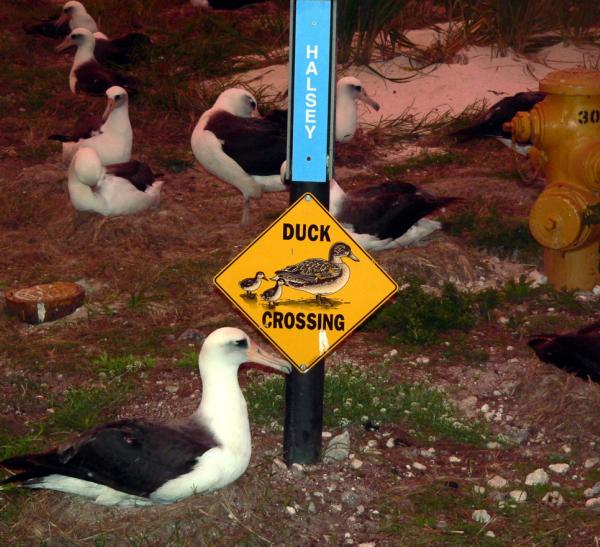 Albatross at duck Crossing
Albatross at duck Crossing
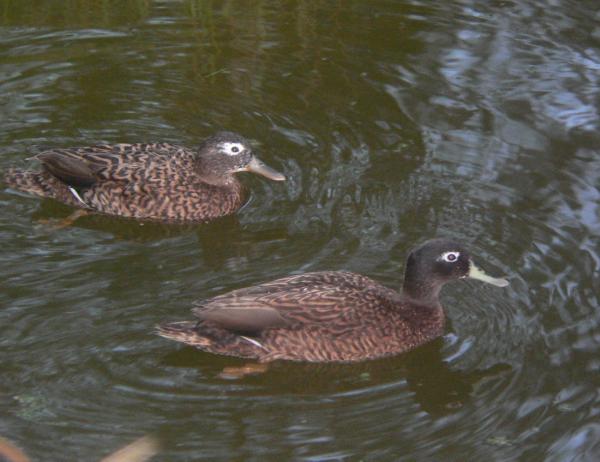 Laysan Ducks
Laysan Ducks
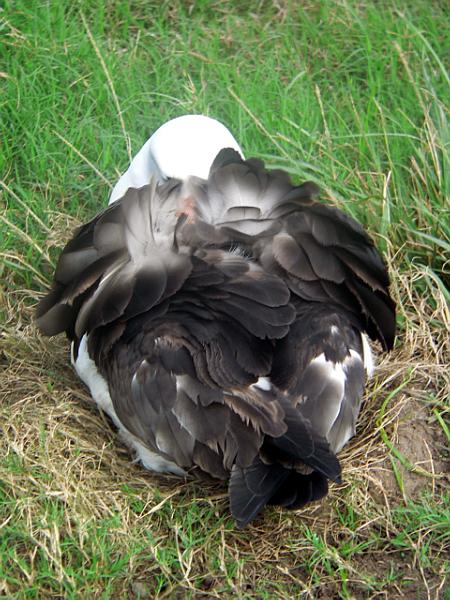

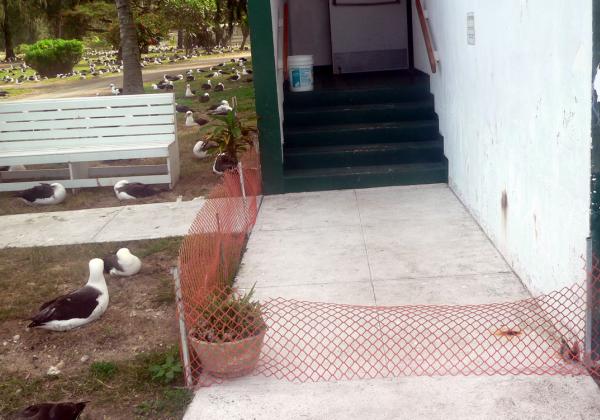 Fencing to keep out the birds.
Fencing to keep out the birds.